My father wanted to go outside of Bucharest, just to see what the countryside looks like in Romania. Of course, the landscape varies from region to region, but to get just a glimpse of it, I booked a half-day tour to Snagov. We are picked up at a nearby hotel by Matei, who introduces himself as Matthew, I’m guessing to make it easier for everyone. The two of us are the only ones on the tour. Matei loads us into his van and starts driving north. He tells us on the way what we can expect from the day and points out the occasional landmark. There is a sculpture that looks like a mohawk to me… I had been wondering before what that is all about. I learned from Matei that this is where the Lenin statue used to be during communism, and that “mohawk” is supposed to represent the Wings of Freedom. Interesting.
As we drive by, Matei tells us that the Băneasa Airport is the third-oldest airport ever built and the oldest passenger and postal airport in the world. Hmm, I can’t help but wonder about the counterpart—after all, the planes and passengers had to go somewhere from this airport. Anyway, still a cool fun-fact. Nowadays, it is not used for passenger traffic anymore.
From cityscape, we transition to industrial areas and finally to agricultural countryside. This is what my dad wanted to see, so we are happy. Soon we arrive in Snagov and park in the middle of a residential area at the foot of a pedestrian bridge. It leads over a large lake to the island with the Snagov Monastery. It’s a lovely setting, and I can imagine the lake being full of boats and kids and anglers in the summer. It’s calm and empty this morning.
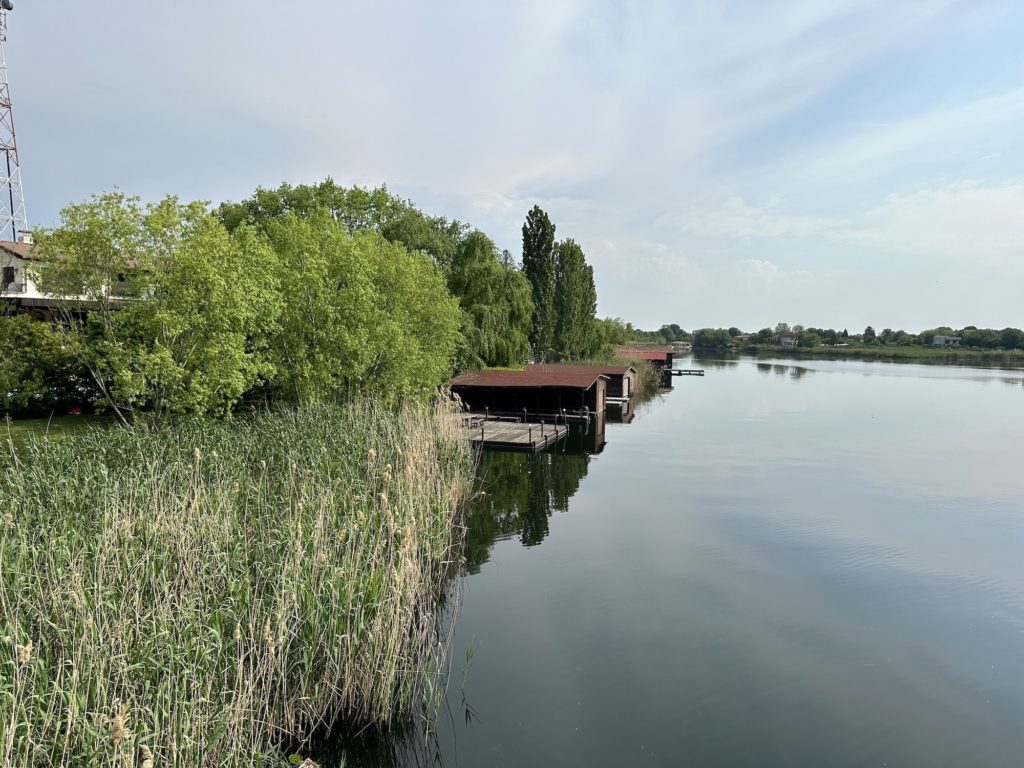

When we arrive on the island, we see an ostrich and some ponies fenced in separately. The ostrich makes clear that we are on his territory and we are not welcome, but he is far away from the path. We wonder what he is doing here in the first place. The monastery is tranquil and picturesque. A pack of dogs who all look alike are scattered across the courtyard, neither of them moving much as we walk by. Our guide is trying to reach someone on the phone to let us into the church. While he is not getting through, he brings us to the shore of Lake Snagov, and we enjoy the calm water and scenery. Eventually, Matei is lucky and gets us inside the church.

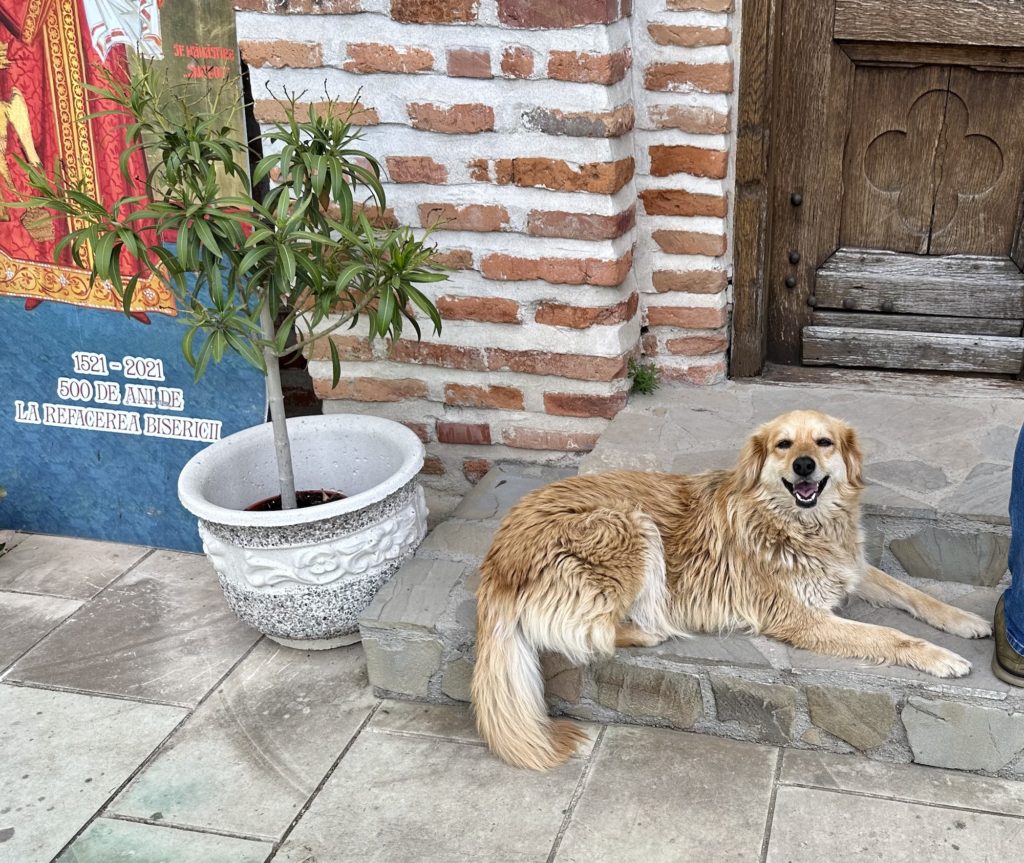
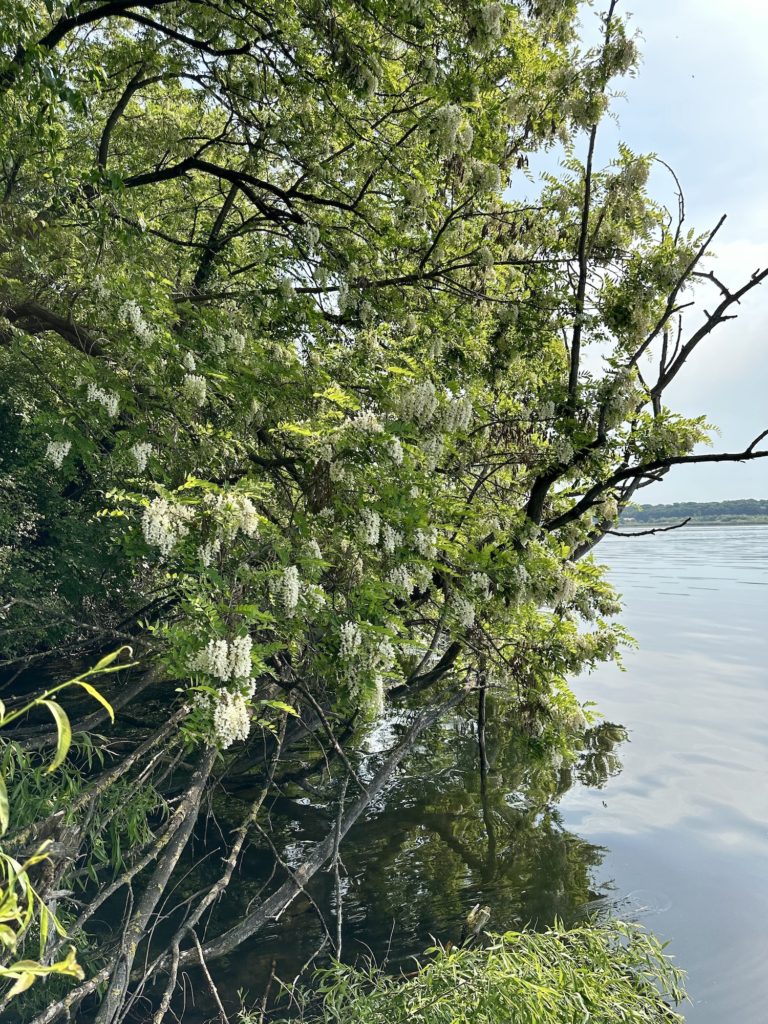
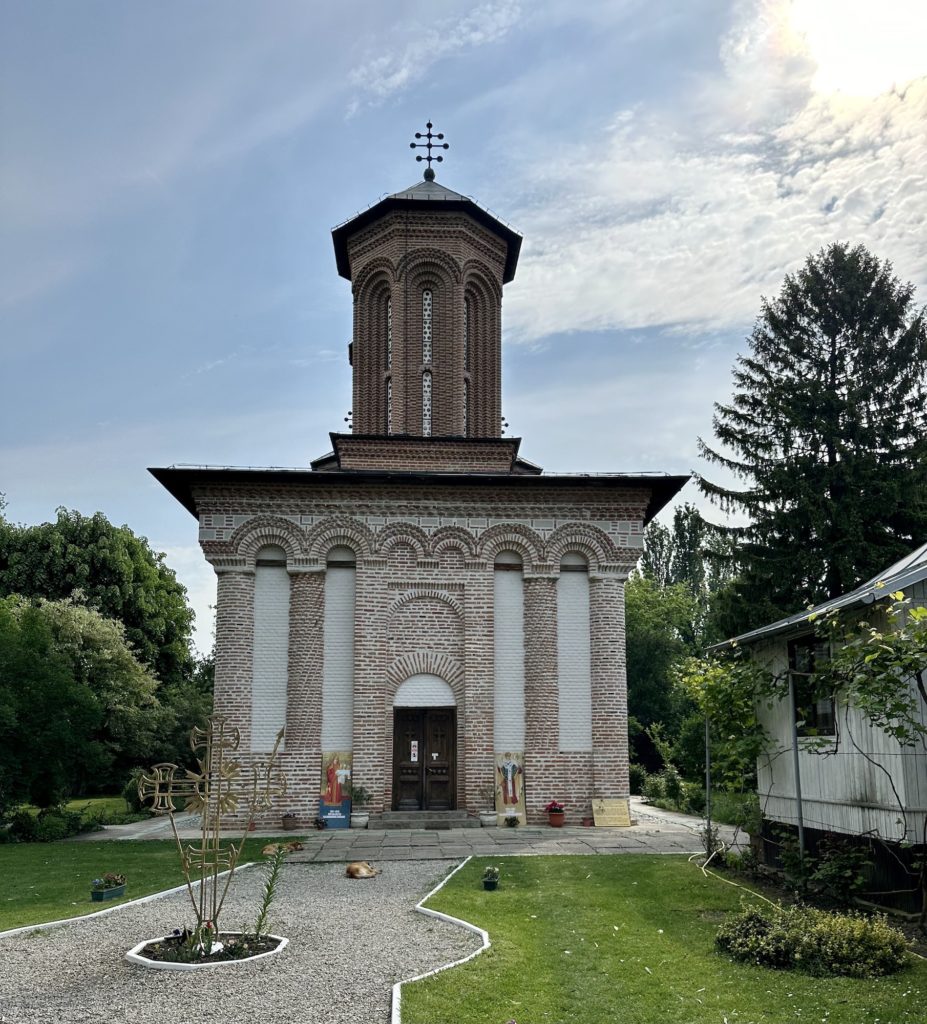
The monastery was founded in the 14th century, and Vlad the Impaler’s grandfather Mircea cel Batrân was one of its sponsors, as well as his son and then grandson. We also learn that Vlad’s father founded a knighthood, the Order of the Dragon, to fight for Christianity. He called himself Dracul (the dragon from the Latin “draco“), and his son Dracula (the little dragon). The Order of the Dragon caused much fright among the Transylvanian peasants, and the metaphor of sucking their lifeblood came to be in their legends, which is how the story of Dracula was born.
The church has the typical cross layout of an orthodox church; the walls and arches are covered with frescos of saints. We learn that frescos are painted onto the plaster when it is still wet, so the paint is absorbed by the substrate, which is the reason that they are so durable and stay vibrant for centuries. Frescos were used to depict saints and bible stories educationally for the illiterate believers. There are never benches or chairs in these churches like we’re used to, and Matei explains that it is custom to stand in the orthodox service.
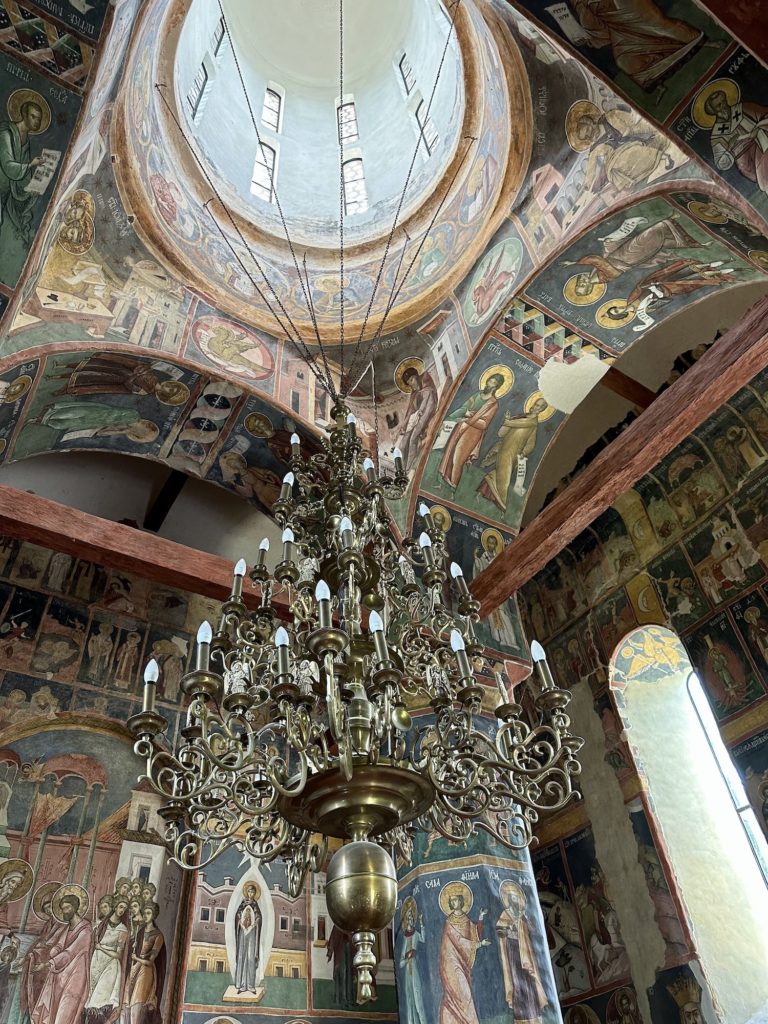
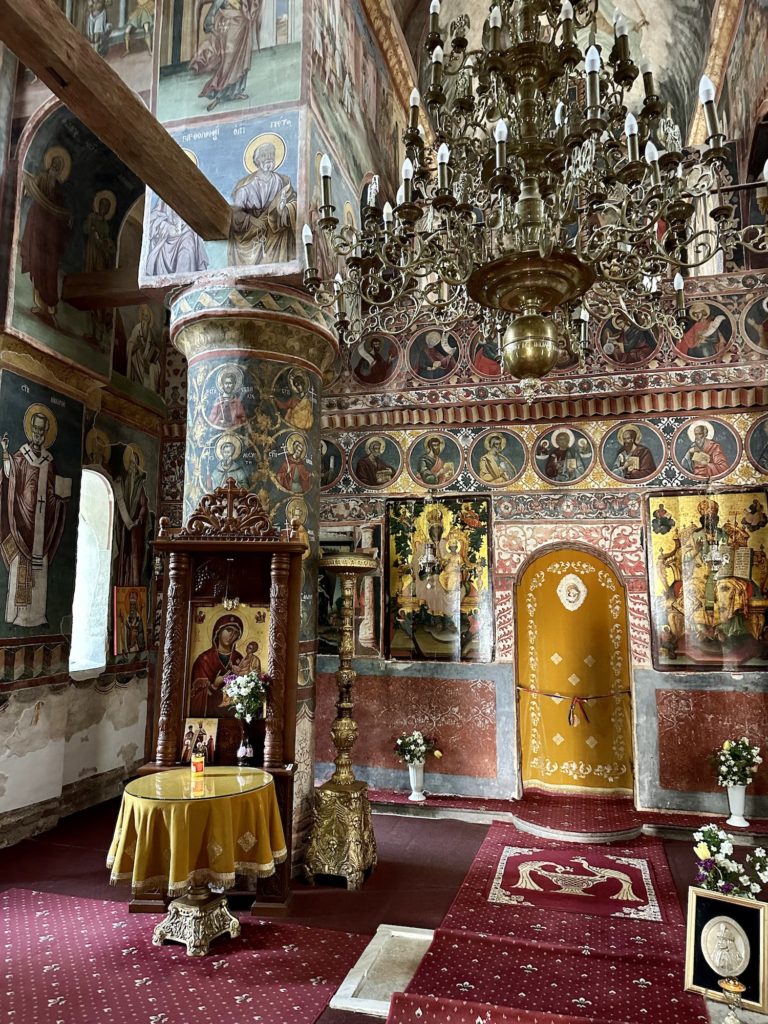
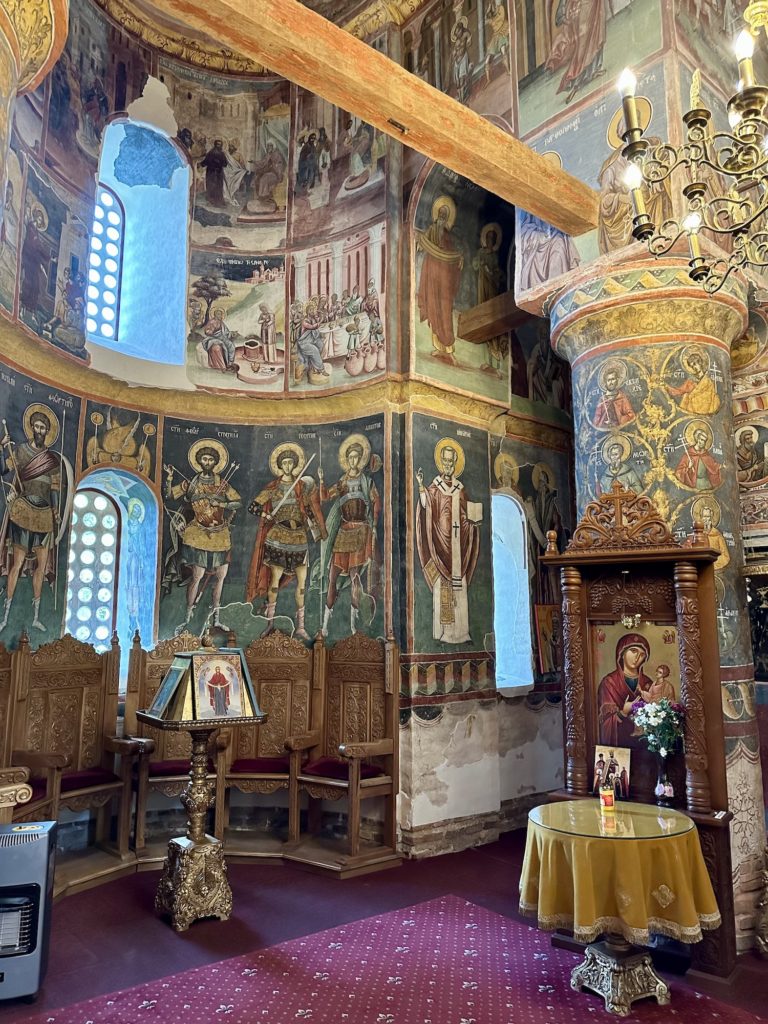
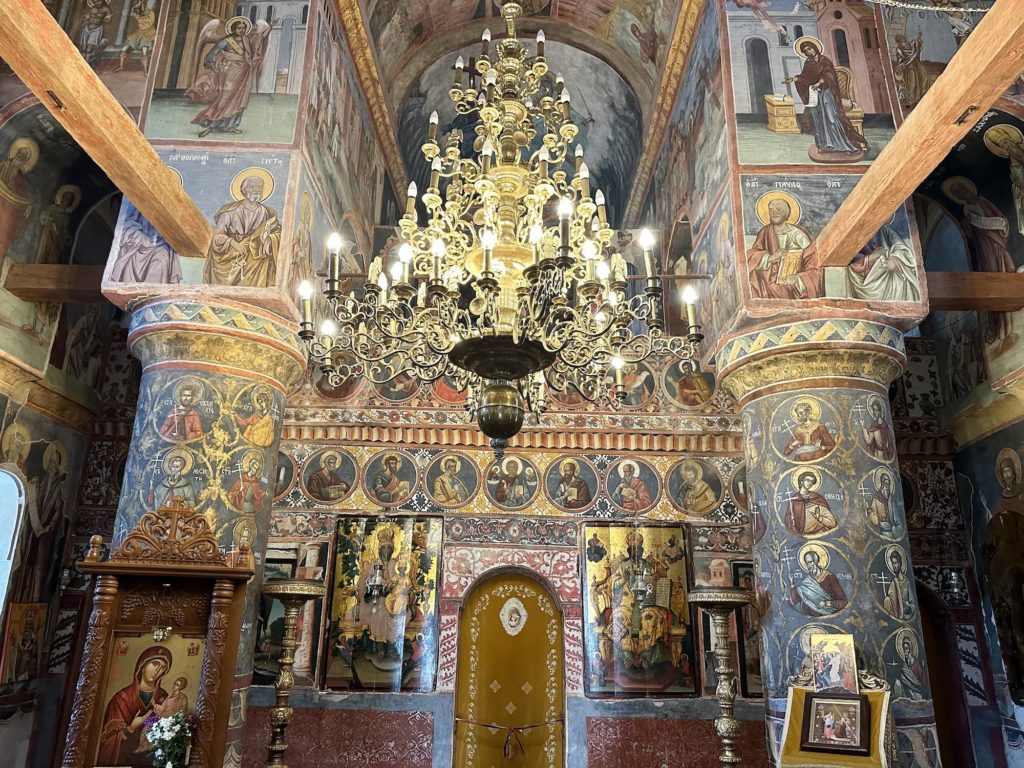
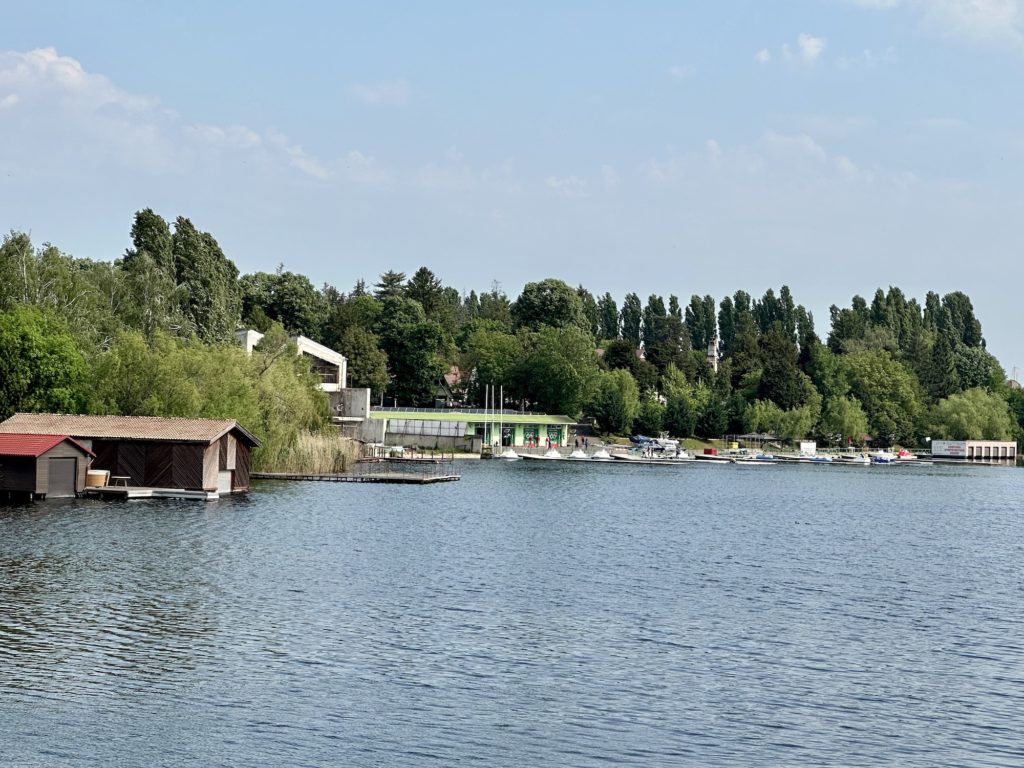
After spending some time to take in the atmosphere and art of the church interior, we slowly return past the ponies and the ostrich and back over the bridge. Before the bridge was built, visitors of the monastery had to take a boat; I imagine that would have been lovely in this pre-summery weather.
Our next stop is the Mogoșoaia Palace, which was built by Constantin Brâncoveanu, Prince of Wallachia 1688-1714, in the Brâncovenesc architectural style. He was dethroned and arrested by the Ottomans, and when given the choice to denounce Christianity or die, the men of the family were executed after deciding to keep their faith. During the Second World War, Prince Antoine Bibescu and his family lived in the palace until the communist authorities appropriated it.
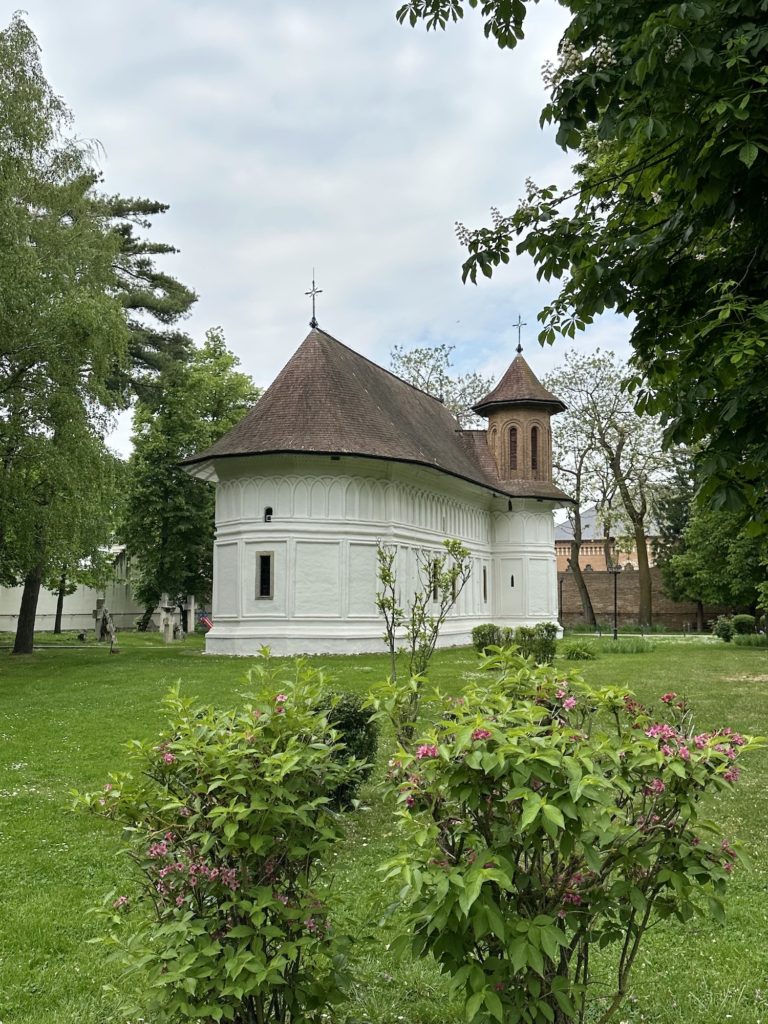
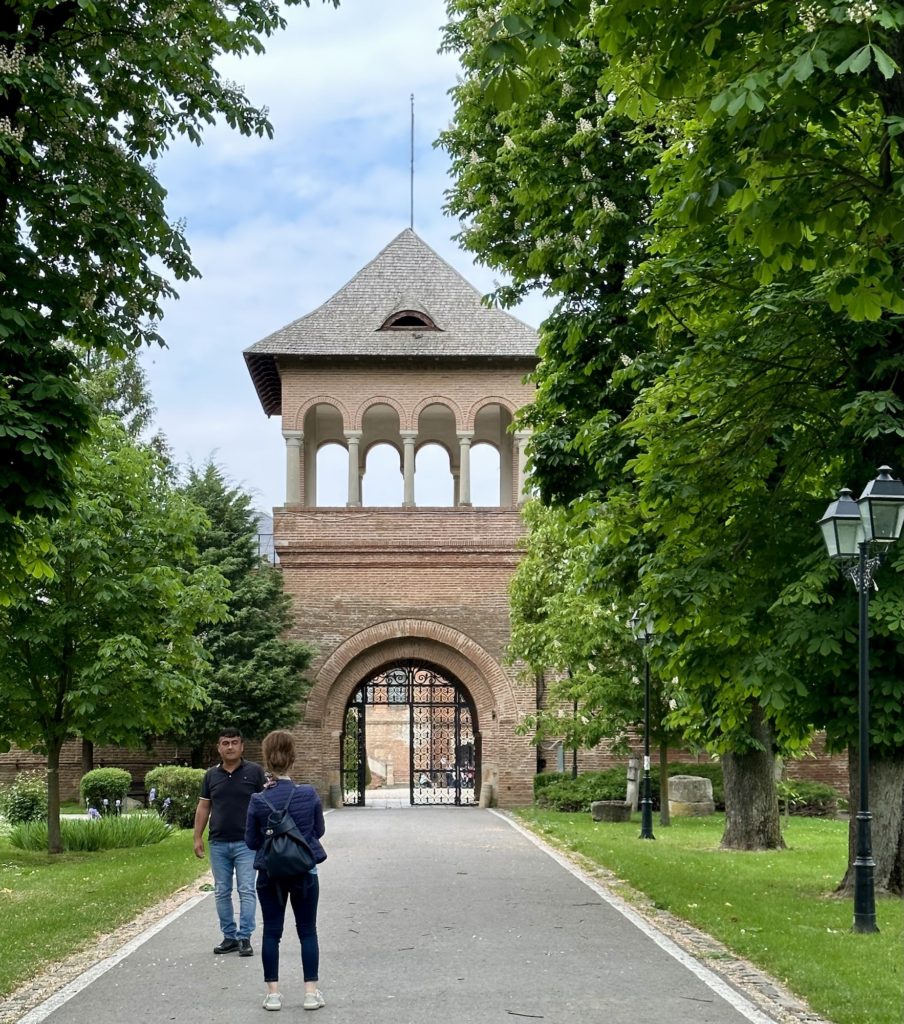
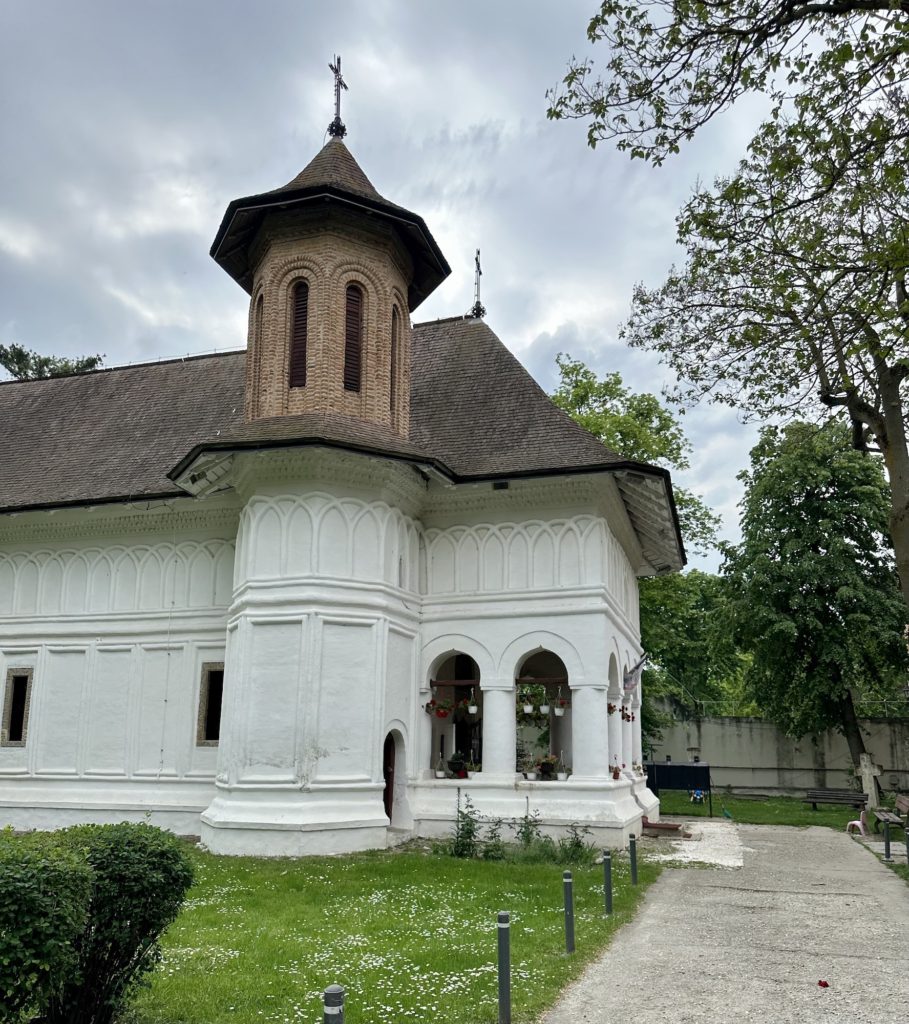
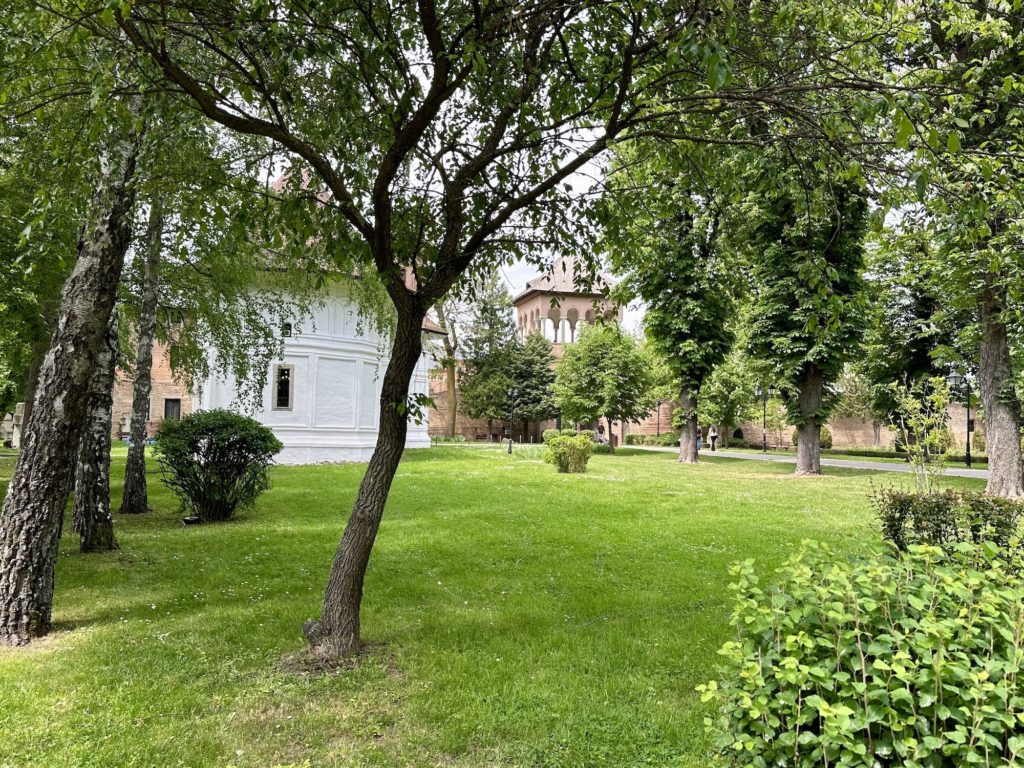
The palace consists of several separate buildings, including a church, the watch tower, kitchen and palace built by Brâncoveanu, and added by Bibescu a guesthouse, a glass houses, an ice house and the family mausoleum. The buildings are set into a well-maintained park at Lake Mogoșoaia; a formal rose garden behind the palace is starting to show its first beautiful flowers. In the wine cellar of the palace with brick vaulted ceilings and marble floors are pieces of the Văcărești monastery displayed, which was destroyed by the communist regime. The palace itself exhibits Romanian art and tapestries, Ottoman funeral rugs and copper plates, and a swallow was frantically flying through the building, presumingly trying to find a way outside, while we were visiting the rooms, looking at photos of the families who lived here and listening to their stories.
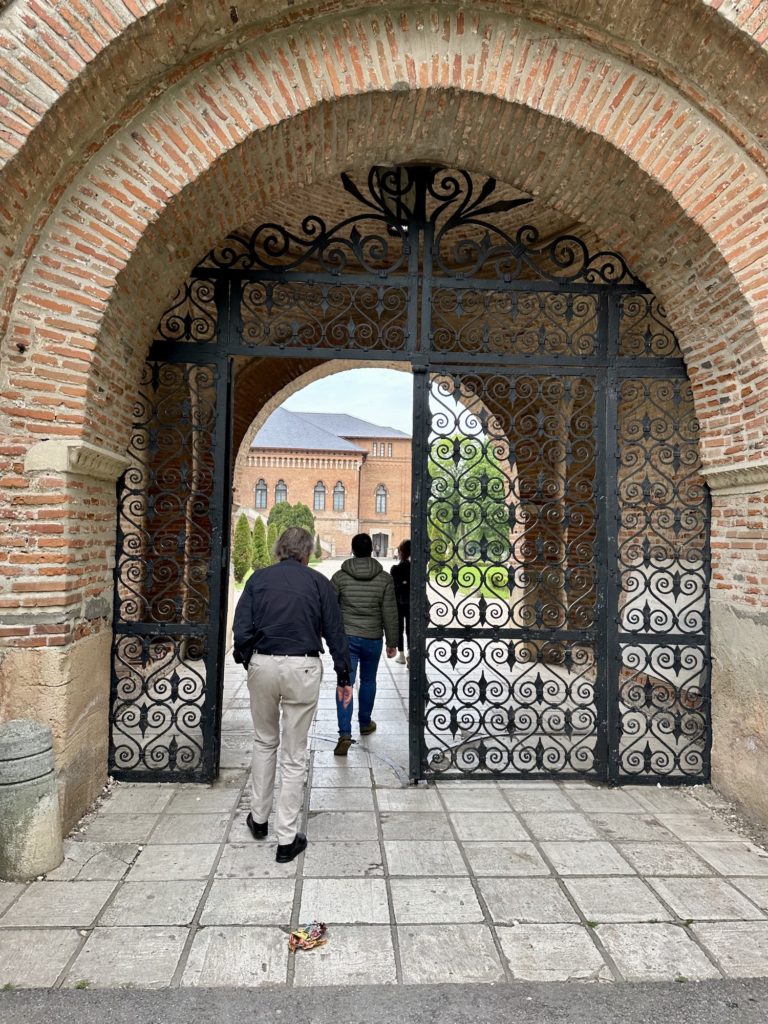

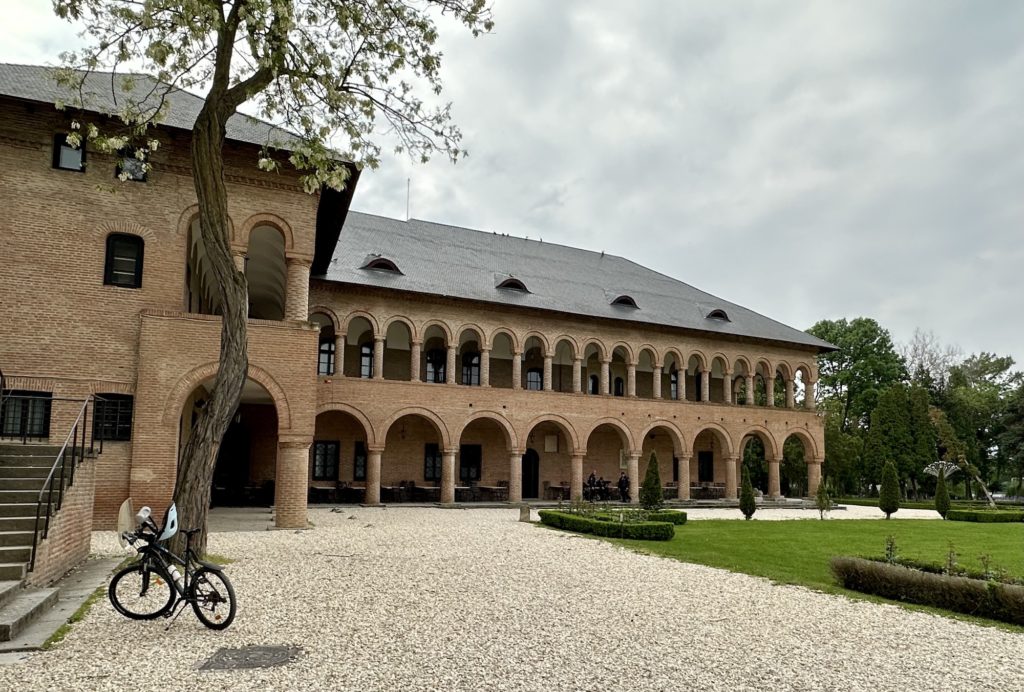
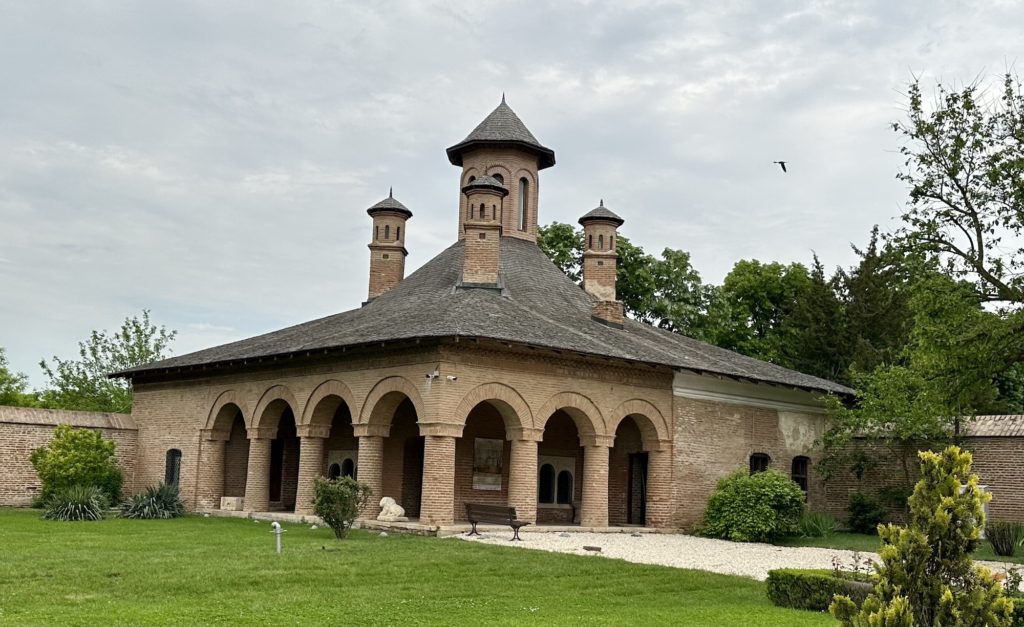
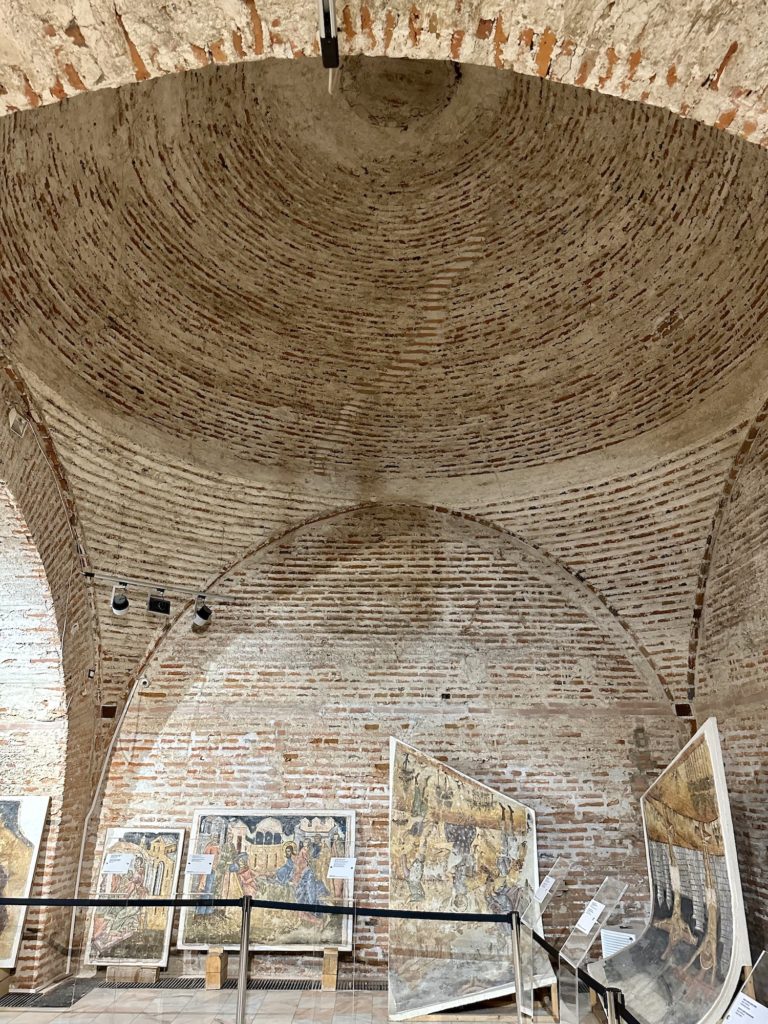
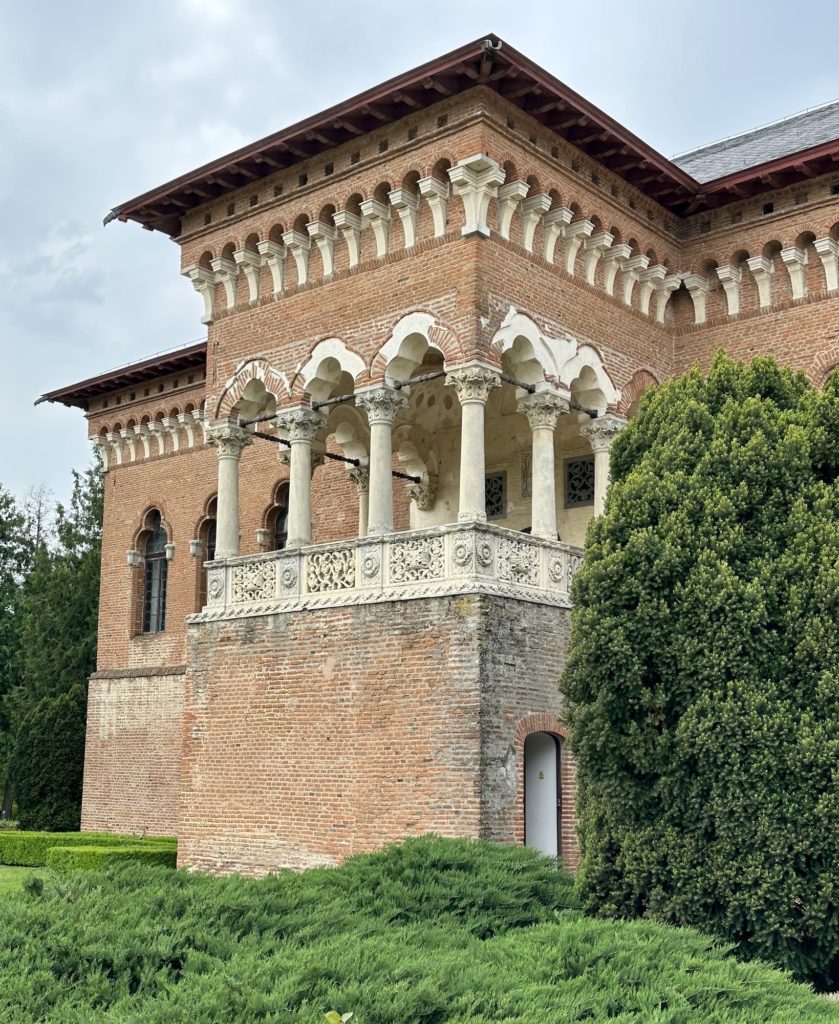
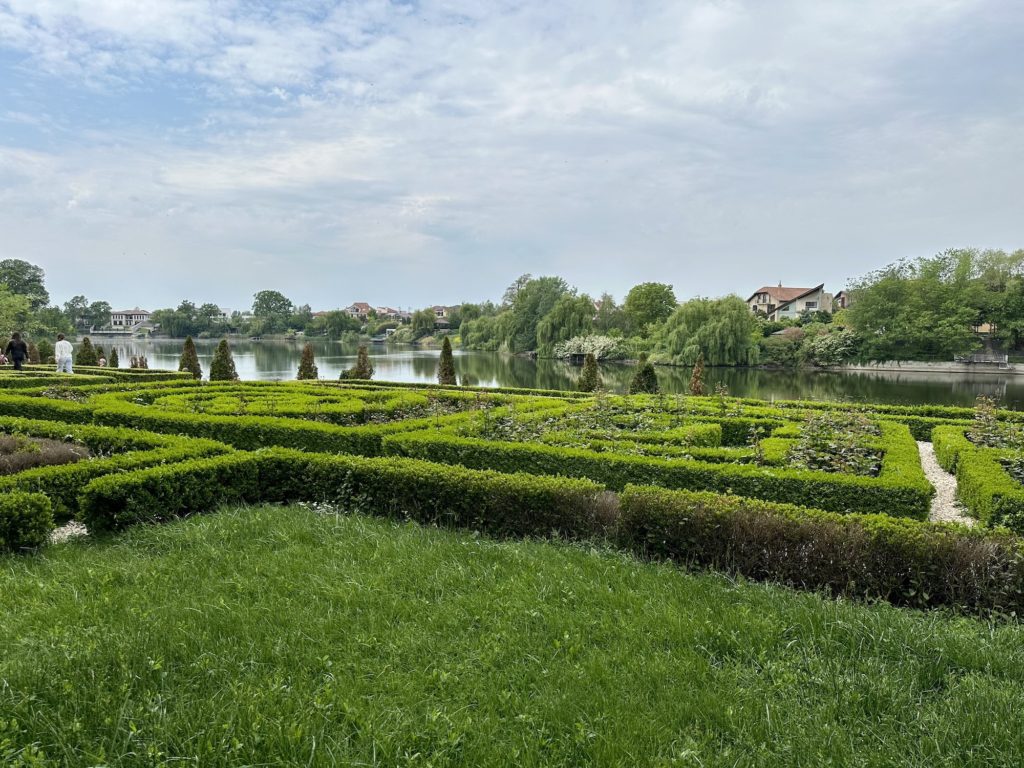
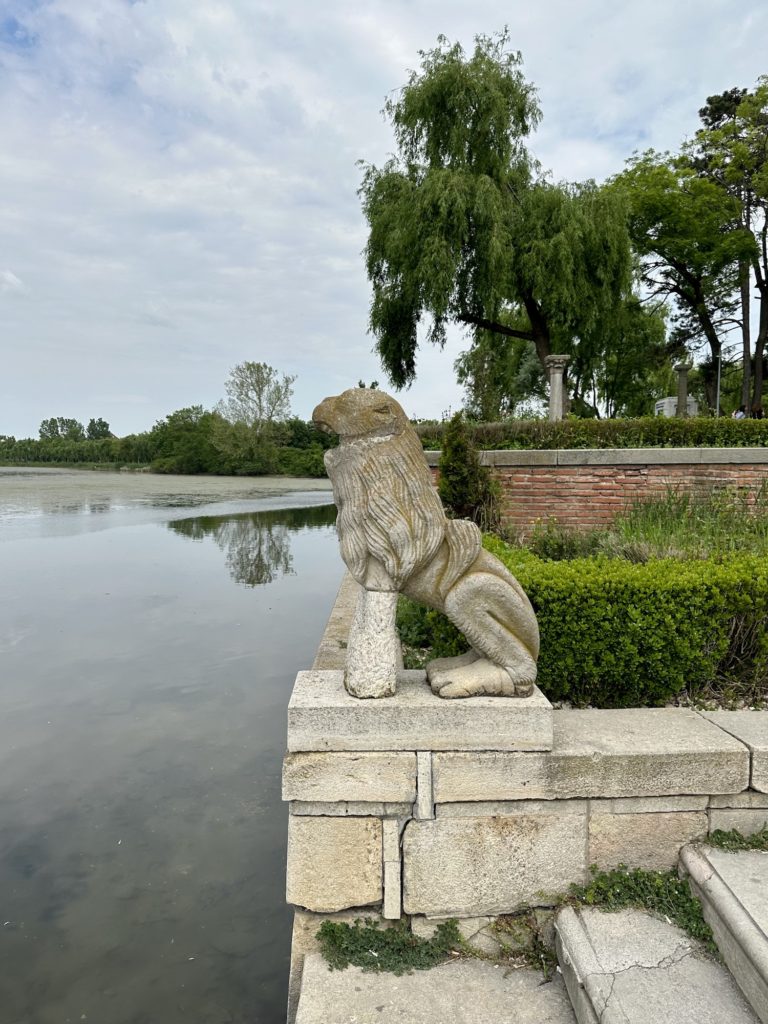

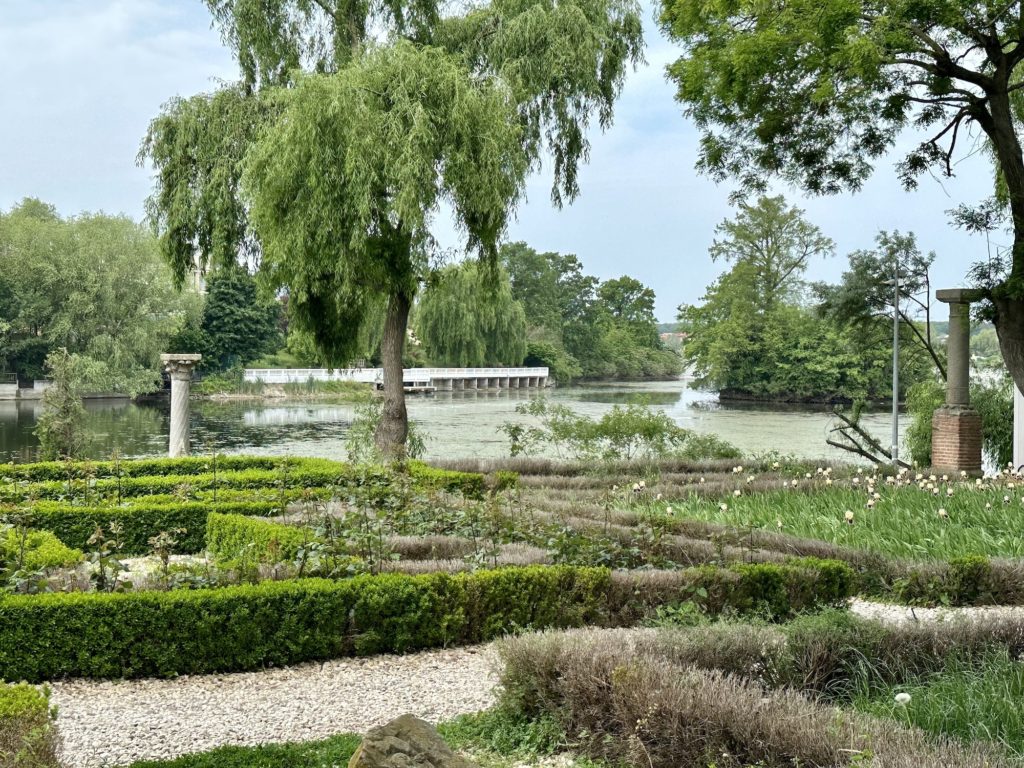
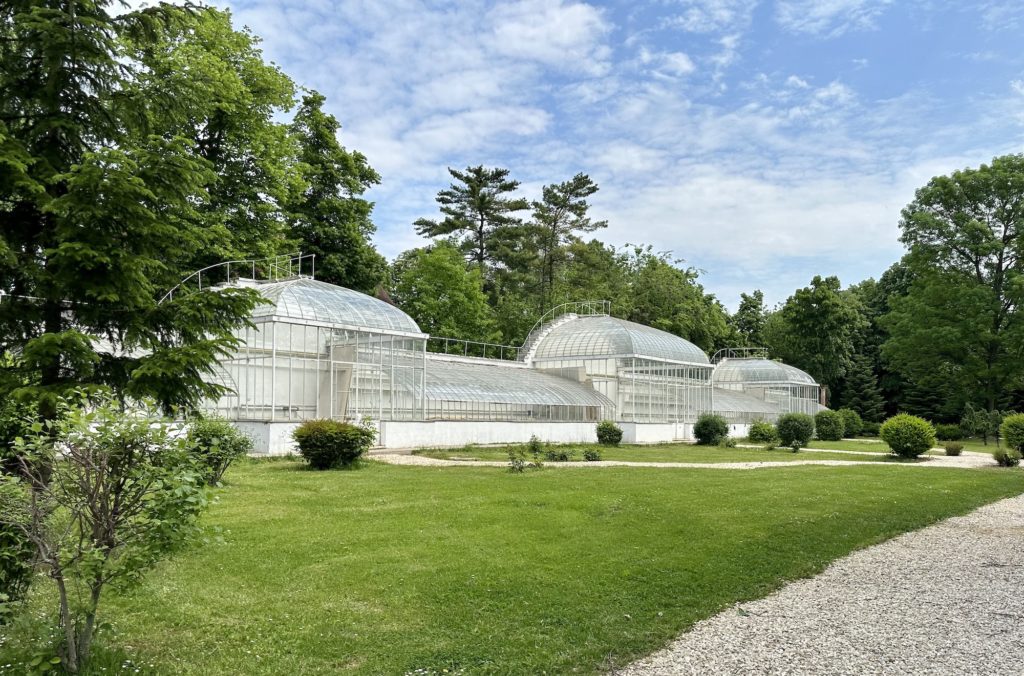
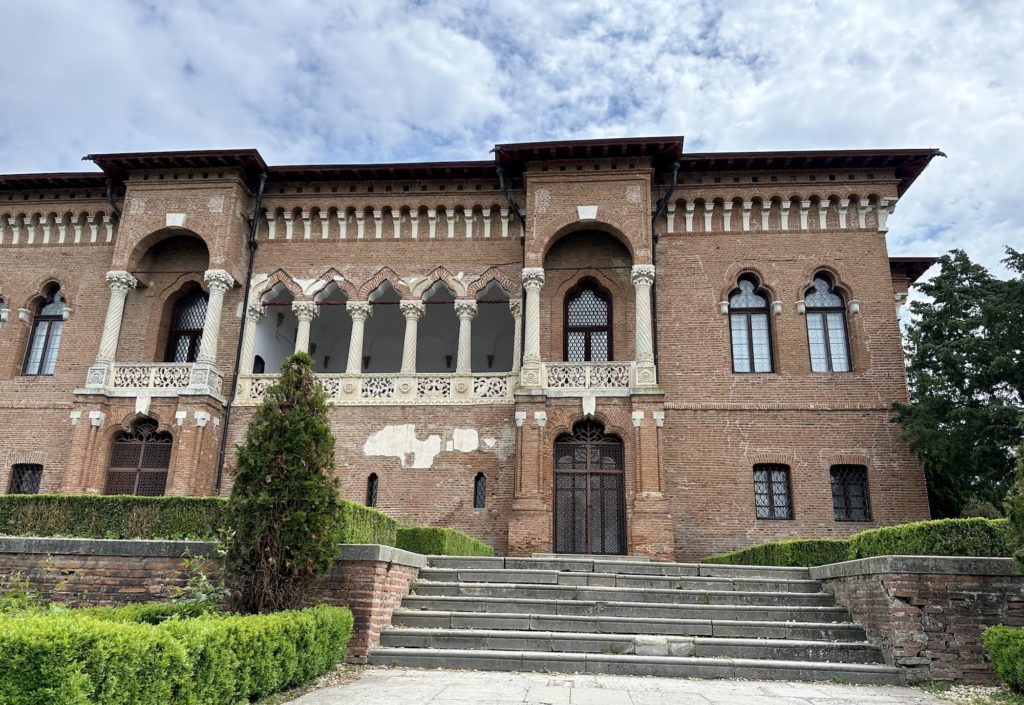
After a stroll through the park, we drive back to Bucharest, where Matei shows us on our last stop the Crețulescu Church at the Revolutions Palace. Inside is a baptism just wrapping up, so we mingle respectfully among the congregation to have a look at the inside of the church, but I don’t take any photos. It is time to say goodbye to Matei here, and we walk along Calea Victoriei, which is blocked to traffic on the weekends, into the Old Town, where we sit in a café for a bit and then my dad does some souvenir shopping as his visit is coming to an end.
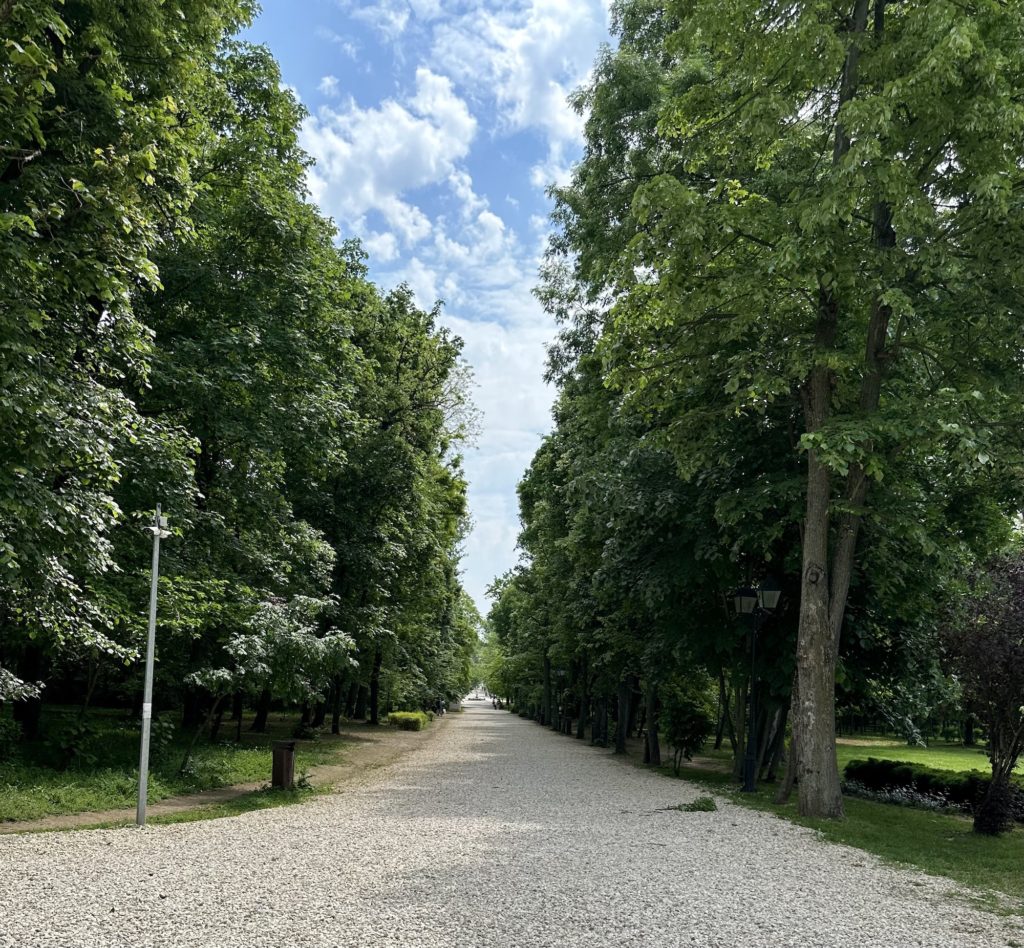
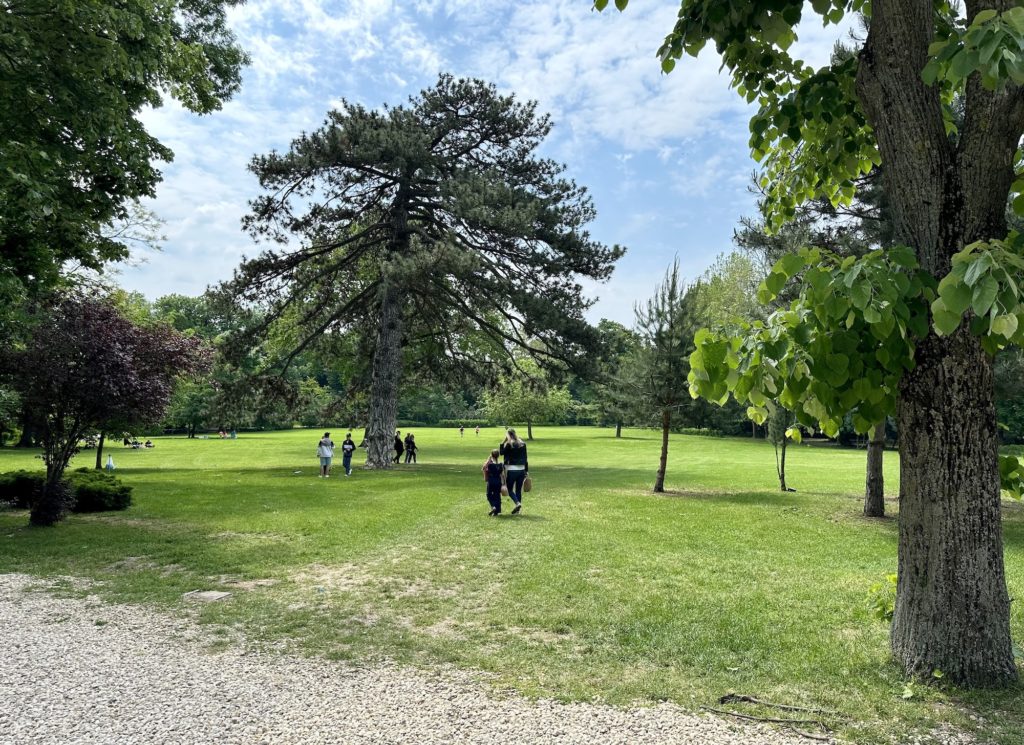
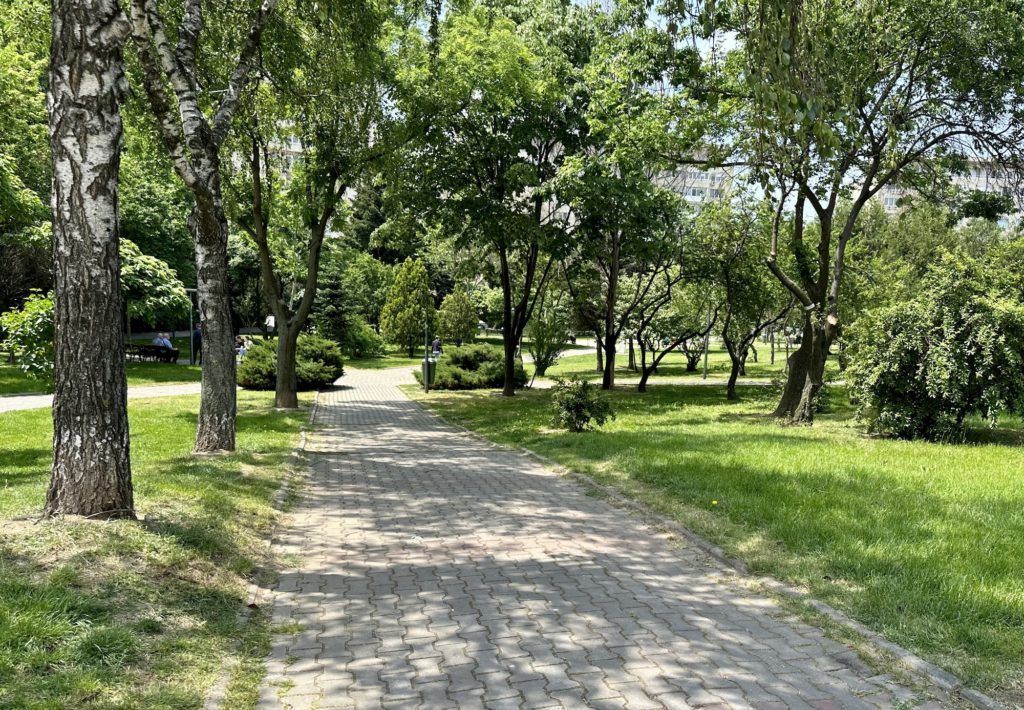
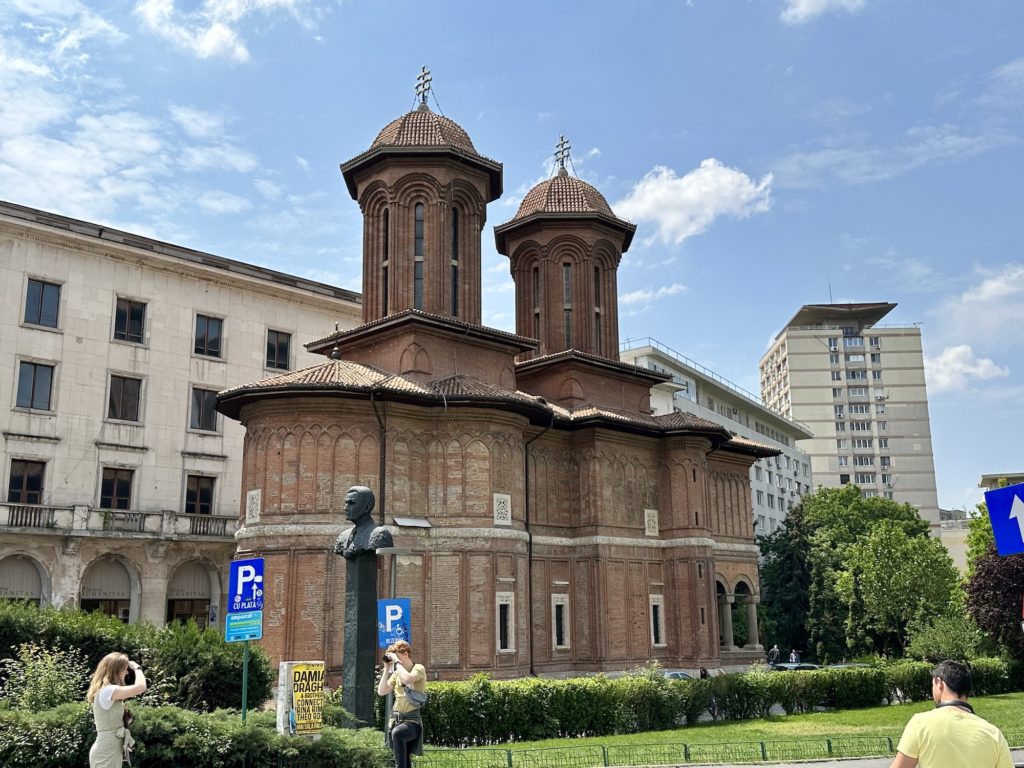

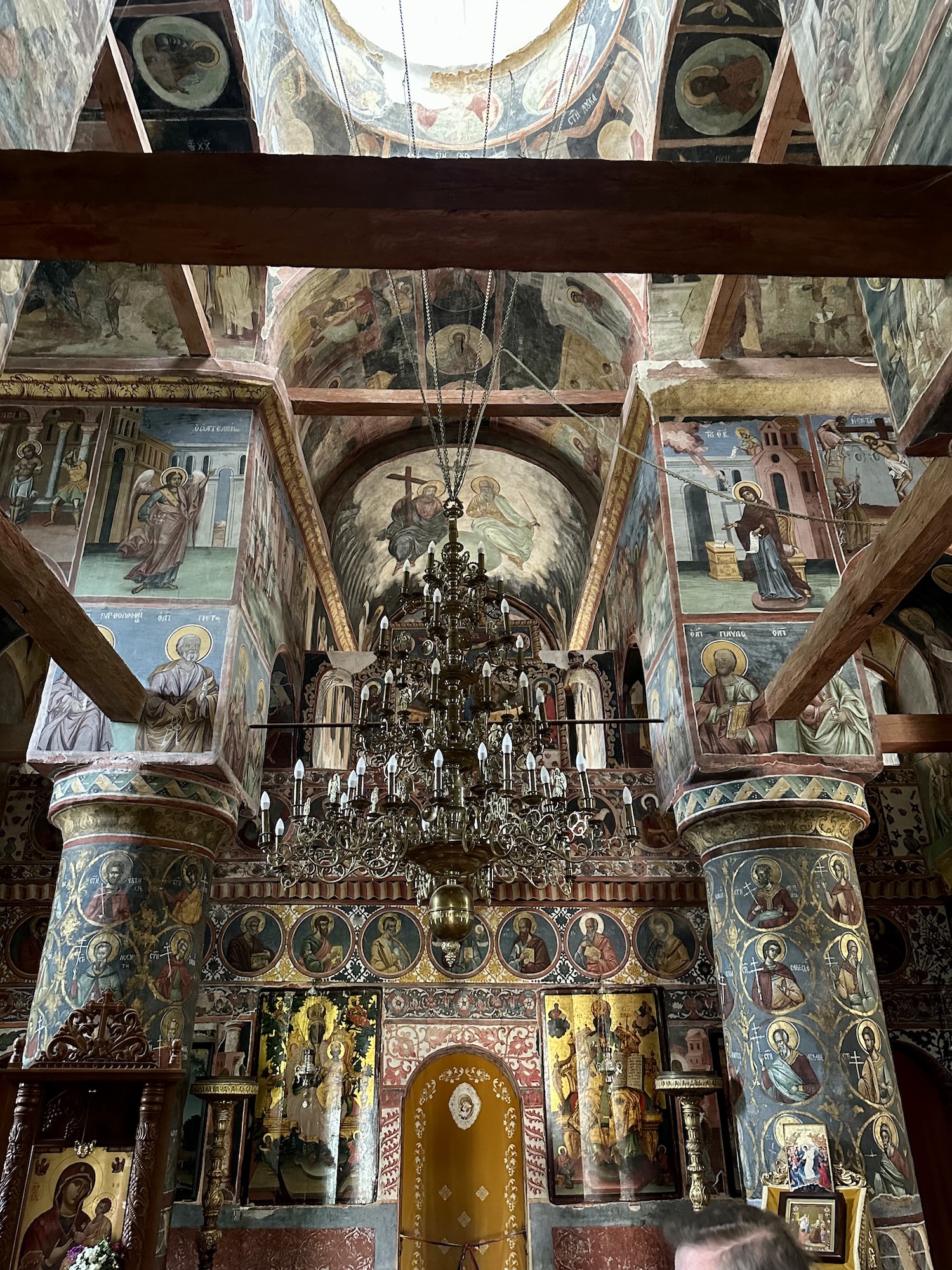
Wow the frescos are amazing. And cameras never do a pic justice so I can only imagine what it most have looked like in person. Spectacular!!
You be thinkinng!!! :O) Damn right with the passengers!!!
C